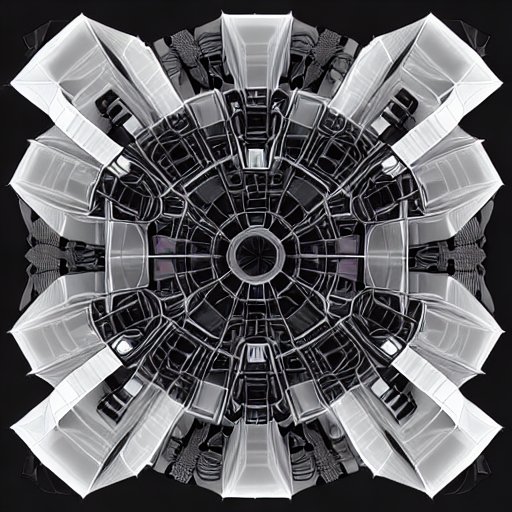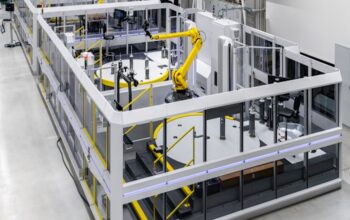The global market for 3D scanning was estimated to be worth 7.4 billion USD in 2021. From 2022 to 2028, it is anticipated to increase at a CAGR of 15.2%, reaching a market volume of roughly 10 to 13 billion USD. We’ll attempt to predict 3D-scanning developments and touch with the key market drivers in light of the comforting financial facts. Let’s talk about the advantages 3D scanners have generally given to industries before we go on to forecasting.
- Increased productivity: Product design, prototyping, testing, and development all benefit from the improved workflow and time savings provided by 3D scanning technologies. For instance, the International Journal of Cognitive Computing in Engineering reports that in some circumstances the design cycle expenses can be cut by 75% in the article “Exploring the possibilities of 3D scanning in Industry 4.0: An overview.” Moreover, 3D scanners provide more rapid and accurate measurements of complicated items.
- Reduction of labor costs: The use of 3D scanners speeds up and simplifies a variety of operations that previously required a team of experts. They can considerably shorten supply chains and cut down on the labor force needed to produce goods or services.
- Increased quality: Higher quality goods and services are now possible thanks to the integration of 3D scanners into industrial chains. To free up professionals’ time to work on more difficult and important jobs, 3D scanners help create more precise and quicker measurements as well as quickly digitize objects with complex geometrical features.
Rising competition and new trends are predicted to have a significant impact on the 3D scanning market.
The post-pandemic world and governmental initiatives in the healthcare sector
Medical facilities are encouraged to invest in cutting-edge tools and technologies that will raise the bar for medical care. Prosthetics and orthotics are increasingly using 3D scanners, which give patients more personalization and comfort while cutting production costs for hospitals. This pattern will continue, and the market for prosthetics and orthotics will be increasingly dominated by scanning. The 3D-scanning market will mostly be driven by orthopedics and prosthetics.
Also, we anticipate the usage of 3D scanners in other medical specialties, such as patient assessment and diagnosis. They can be used to take measurements of the body and monitor a patient’s healing following surgery. Also, the tools can help medical students with their studies of human anatomy and organs.
The developers will be forced to simplify and improve the usability of data gathering and processing as 3D scanners are widely used in the healthcare industry. An increasing trend for integrated hardware and software solutions geared towards particular medical disciplines will also emerge.
Emerging trends in IoT, AR and VR, Metaverse
The gaming business actively benefits from 3D scanning because it lowers production costs and frees up highly experienced specialists’ time. Photogrammetry is used to aid in the formation of characters. Environmental information including rocks, shrubs, street debris, and so forth is mostly scanned as well. By elevating 3D artists from routine work and focusing on the refinement of the details, the games become more lifelike.
The use of 3D scanners may increase as augmented reality technology develops. Facebook Zuckerberg set the way for the new technology in the video “The Metaverse and How We’ll Create It Together.” Natural real-life experiences and a strong sense of presence will be brought via the metaverse. The technologies must advance far enough to achieve these lofty aims. We anticipate that the creators of the Metaverse will draw on the expertise of the gaming sector and apply 3D scanning techniques to the development of realistic settings.

The need for lightweight and autonomous devices
Criminalists are becoming more and more interested in using 3D scanners in their job. They allow experts to gather information more quickly and make crime scene analysis simpler (a person can always open a 3D scan of a crime scene and study it as if he was there in real life). Without a doubt, 3D scanners improve forensic studies and may even aid in lowering the number of persons required for investigations.
The new trend will compel manufacturers of 3D scanners to devise new technologies that will increase the devices’ dependability when used in challenging conditions (such as scanning in freezing temperatures or bright sunshine) (in the desert or jungles).

Artificial Intelligence and Machine Learning innovations
Up until recently, programmers and fans were more interested in AI, but it has recently been undergoing active development. It appears that a new age is beginning as a result of ChatGPT by OpenAI causing a stir on social media. The use of artificial intelligence in programming, design, and the arts has received a lot of attention. We anticipate AI to be used in data collecting and point cloud processing in 3D scanners because of the trend’s rapid evolution.
Nowadays, compiling scans from separate parts and cleaning and analyzing data require a lot of time and human effort. In essence, it is manual. In the upcoming years, we anticipate that software that runs 3D scanners and analyses scan data will actively incorporate AI. All of this will lessen the need for human intervention, streamline 3D scanning tasks, and lower the bar for new users.

Click on the following link Metrologically Speaking to read more such blogs on Metrology.









